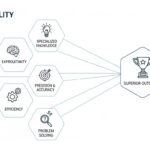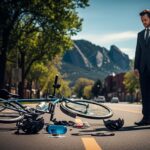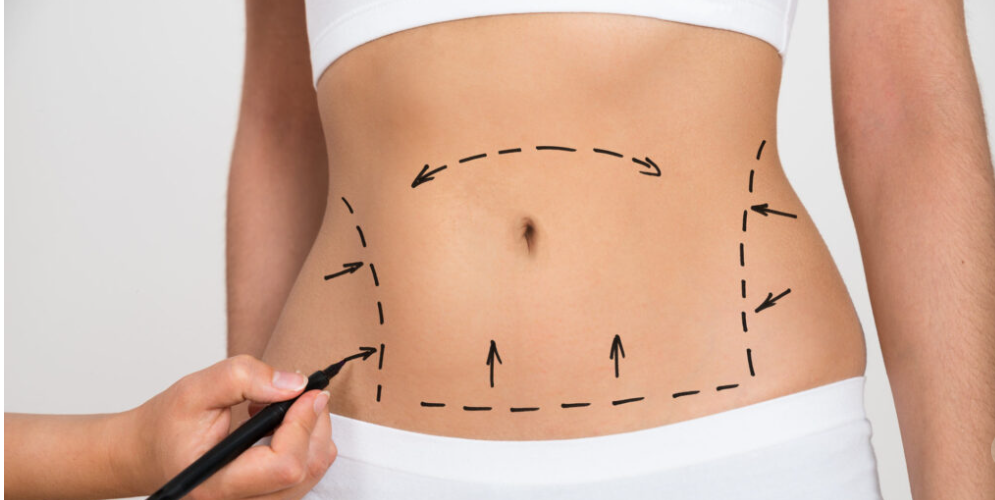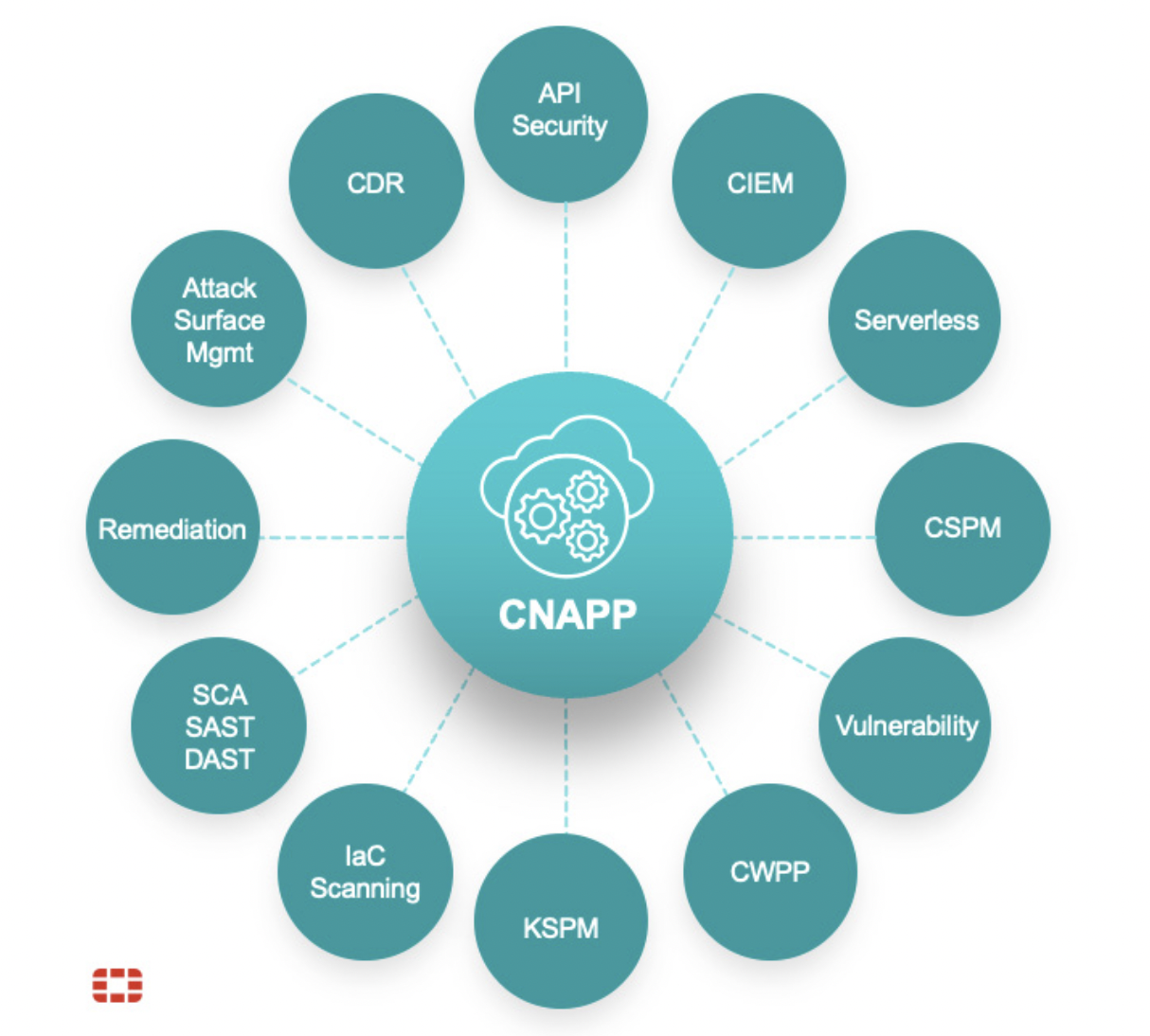Above a girl who sits on a floor, is a ball suspended in air. Her arms are raised. The question of whether she threw it or is ready to catch escapes your mind because of the way in which time doesn’t exist here. In stillness, raised arms can only accept the invisible; there is no material relationship to things, but rather to the space between things. Her plaster dress fans out heavily on the floor. It takes on a ghostly weight, both from the material of its construction, but, more importantly, from the gravity of its colorlessness. The very absence of color in her skin and her dress and the ball hints at an originating loss from which she was given birth. She is called to be here because she is needed. She is imbricated with the historical and the personal in an implicit cascade of many points in time enmeshed into one timeless present.
A shirtless boy stands across from her several feet away. His glassy eyes are fixed for an eternity on the floating ball. His arms at his sides hold the color of dreams, purple, and with no one to give it to except the one whose sleeping mind he shares. Behind him, a nurse in purple scrubs hangs crucified like a messianic scarecrow before a field of cotton tissues sprouting in even rows from the soil. In the soil, another woman, too, cross-legged, looks up at the frozen white plaster orb. The orb is a fixed memory obscured by the dull veneer of its whiteness, an always-present absence, a form of poetry, even elegy
They are not necessarily here for us, the viewers, but the burden of loss we all carry, becomes theirs because they are still enough to bear it. The question of burden and loss deserved or not is meaningless in the face of shared contingency. Art is for human survival. It always has been.
This is my second visit to Wilding Cran Gallery in LA’s downtown arts district to see Karon Davis’s solo exhibition Pain Management. My first visit was on opening night where I experienced the inner confusion that results from the combination of busy social activity and a body of work so emotive it feels profane to speak at the usual volume. Having just returned from a week of vacation in the mountains where the only intense sounds were the midnight hysterics of coyotes, the shock of the indifference with which we regard the work on opening night in contrast with the work’s power and authenticity leaves me feeling ill at ease.
Step 1
There probably hasn’t been an edition of How To Give a Shit yet where I didn’t remark on the value of the poetic aspect of visual art, yet the fact of the matter is, not since my mid-20’s have I really read much poetry at all. So invested in my own research comprised largely of non-fiction interspersed with my favorite novelists and short fiction writers, poetry is, quite honestly, something I know too little about. I feel attuned to some form of poetry in the visual, but what do I really know about poetry as tradition or form?Over the past several years I’ve been surprised and, even at times, alarmed by the way visual artists, myself included, are so specialized. It might be this tendency that’s responsible for the many times I’ve heard artists, even those I highly respect, say things like, “I don’t like to read fiction or poetry because I don’t’ have time to read things that aren’t real.” Or “I would rather read or hear a true story than something made up.” Are we so divorced from the written word that we can’t sense in these statements a form of self-defeating nonsense? That they are a form of category error? Or that if we applied the same kind of thinking to visual art, there would be no reason to look at anything other than editorial photography? Or is it simply that poetry is so far removed from our daily lives that we haven’t had enough opportunity to read poetry or know where to look for a good poem, to feel the crushing truth of it in that burn-from-your-heart-right-down-to-your-feet way that political memes or science articles just can’t do?
I suspect a lot of us think we don’t like poetry. This is a lot like saying we don’t like music or art, and when you consider how much bad music and art there is, it’s not impossible to understand why someone might say that if he or she doesn’t know where to look. And poetry might have an even lower barrier of entry, in that, in most cases, you have to have some kind of hand-eye coordination in these latter activities to claim you do them. To claim one is a poet, however, one might believe that all there is to do is simply shorten the length of a line and write in a more flowery way. For this reason, there is an awful lot of bad poetry out there. I’ve written some myself.
“Feel Free,” like all of my favorite poems reminds me of something I forgot I knew. Poetry, too, is a needed and valid form of research, in that it provides a way into oneself otherwise inaccessible. I read William Carlos Williams, Elizabeth Bishop, Pablo Neruda, Mark Strand, and more Nick Laird. Then I graduate to the New Yorker poetry podcast listening to a wide range of poets followed by a rich interview with the poet David Whyte by Krista Tippett on the On Being podcast, which has become my favorite. After I get through all of that, I remember superstar visual artist Robyn O’Neil does a podcast called “Me Reading Stuff,” which, as it turns out, is at least as good as the New Yorker one if for no other reason than her gift of making listeners feel that she is addressing them directly in a completely uninitimidating, down-to-earth, and often flat-out hilarious way. You can dislike poetry, but you can’t dislike Robyn, which is why, through her, one can’t help but convert.
Step 2
Visit the studio of an artist whose work relates to something you care about.
My very first conversation with Robyn O’Neil at her apartment and studio near Beverly Hills begins with comparing the virtues of LA’s parks, which is the most creepy, where is it most likely you’ll run into people having sex while on a jog, did you know about the abandoned zoo in Griffith Park, my favorite animals are wild cats, they make the best sounds.Speaking of, have you ever heard coyotes at night? Or how about the echoing sounds of bald eagles along canyon walls? It’s not cheesy at all like on Colbert. Can you believe the wingspans of eagles, they’re like the size of a jet! My brother told me they snipe mountain goats off the sides of steep cliffs and then fly down and eat them; are you allergic to cats, no I love all animals, which isn’t an answer, but no, I’m not allergic, would you like a glass of water, I don’t have many snacks, I’m not supposed to eat snacks (why did I say that?) until finally we settle down, her in a studio chair, me in the cat’s chair, and do a quick look around at the remaining art that didn’t get shipped to Dallas for her upcoming show at Tally Dunn Gallery.
I’m surprised, in a good way, that her studio is converted from what would be the living room. Less recent drawings and those in progress hang on the walls, while other things are scattered about on tables. Large windows with an impressive view of the city span the north wall, which allows perfect light into the space. In the center is a TV, which apparently is on most of the time because she likes the sound of TV voices. Her favorite show is the original Beverly Hills 90210, which she’s watched from beginning to end several times. I once read an interview in which she expressed an intense interest in the 90210 character Dylan McKay and even visited his TV house. I wonder if her 90210 zip code is a checked box on her list of childhood dreams. Famous artist: check. Dylan’s neighbor: check.
In full disclosure, I’ve met Robyn before. We showed together at Charlie James Gallery in Chinatown in a group show curated by Nick “Wolfdaddy” Brown, who, along with Kim and Maja, has made cameos here before. If not for my first meeting her, there might not exist a HTGAS column at all. When it was but a nascent possibility and it came up in our one gallery conversation, Robyn exclaimed something like, “Yes, do it! We need more artists battling apathy!” And that was it for me, boy. If Robyn said do it, by God, it was permitted. In America, we like to declare war on things. Robyn gave me permission to declare war on an abstract concept pertaining to human indifference, and I accepted.
At some point during our conversation, we’re interrupted by cow sounds, moos, somewhere on the street below. She identifies it as an alarm. I don’t have enough information to present an alternative idea. She says in a goofy but sincere way, “see, even that cow interrupting the conversation is a form of poetry.”
She says, “It’s amazing to me how often I encounter the way people put words together. What it sounds like when you overhear a conversation. Or even in Beverly Hills 90210.”
I can tell Robyn uses plain language as much as possible as a means to know inwardly, as she’s talking, that she is being as sincere and truthful as possible.
She even says at one point, “When people have just very honest answers about why they do something, that feels refreshing at this point. Like if you do this because strangely it impressed someone in seventh grade, and this is why you make work this way, then just say that!”
The humor results simply from trusting the way the words land, and in knowing that the world certainly is absurd but that our feelings about it are no less deserved or felt. The result is a form of “humor shedding,” that is, the gradual secession from self-deprecation, interjection, and self-contradiction until a path has been cleared to move forward into earned seriousness. For long moments, a kind of no-bullshit elegance takes hold of her cadence as she enters into discussing, without apology or self-consciousness, the things she feels most deeply to be true.
“Poetry is in every human being. Always. They’re just not realizing it. I’m very willing to be embarrassed by the fact that I believe this is what brings meaning to the whole reason we’re here, as artists, doing this thing.”
Robyn has a quality that most of my favorite artists have. It’s in the routinely accidental kind of revelations they fall into and the sense that they know more than they’re letting on, yet respecting the mystery enough not to ruin it by reducing it to falseness. There is a quiet permissiveness in not knowing, which is, I think, a form of respect for art as some kind of entrusted resource to one who uses it, at the intersection between the absurd and the sacred. Our talk moves forward in this way until we arrive to that most loved and hated word: “Romantic”.I feel strongly that the way in which this word is commonly used in the art world carries within it an implicit bias that reveals more about the one using the word in a dismissive way than it does about the work it ostensibly refers to. The word “romantic,” I suggest, becomes the deviation. Somehow, it’s not the other way around, that the word expresses the real and that the opposite, the utilitarian or materialist view isn’t some form of negative illusion expressed in a viewer’s or reader’s inability or unwillingness to see what really is present.
Step 3
Walk through the gallery space as if the art is your own. Imagine its construction. Imagine the circumstances of its construction, of your life during its construction. In your mind, take it apart and look at the pieces.
I shred the medical bills. The insurance language. The rules and regulations. A former life. I do this to keep things moving. If I move, I live. If I don’t, I die.
I cut chicken wire and shape it into an armature for wings. This is where I stuff the bills, the language, the regulations.
I run my hand over the tiny shredded fragments of the language, embedded in the wings, which feel too coarse to be down feathers, but nevertheless fuzzy, harmless.
I think of the nurses because if I think of myself I stop moving. If I look in the mirror, I get the feeling of a false reflection. So I think, that’s it, a mirror is needed here.
I put the wings on the nurse and, on her own, she lowers herself to her knees and rests her head on a box, exhausted, in ruin. In the box is a mirror. In the mirror is a reflection. It might be her. It might be him. It might be me.
I walk into the waiting room and find it just as I remember, but empty. Chairs, coffee table, magazines, lamp, a clock not ticking, potted plants, a fire extinguisher.I feel my plaster body dissolve as I walk through the room. There is a nothing-and-everything affixed to the quiet elevator melody. It’s confusing how the fact of myself is not a fact, but as much a ghost as anything.I remember the story my mother told me about how when my brother died, and they brought in the body, she and my father had to move the magazines to one side of the coffee table to lay him there in blankets. I thought, why didn’t they give you a better room, mom?In the waiting room, I wait for something to happen. That’s what it’s for. That’s why I made it.
Step 4
When Robyn cries, it happens so naturally I almost don’t notice. It might be that I’m used to the diurnal wateriness of the studio three: Maja, Kim, and Josh, all of us big time crybabies. If anyone is surprised by the sudden tears, I think it’s her. She explains her earliest years as an aspiring artist, visiting the art museum with close friend Trenton Doyle Hancock, she around eighteen, he around twenty. They began planning, then and there, the ways in which they would rise to the level of their heroes. How they needed to make work with “lasting presence,” how everything needed to be imagined if it was to one day be real: worlds, futures, characters, lives. The surprise cry seems to come from the present disbelief that two kids from Nowhere, Texas could give each other permission to think in this way and in the deep-down suspicion that something real brought them together as mutual supports to last through the stacked odds of everyday life.
And then she slows down and considers what has been sacrificed and lost over the years. The toll that a career in art requires of the artist and the way in which a dream, though not regrettable, becomes all-consuming. What she understands now that she couldn’t know at eighteen is the cost, that the everyday-life things we all need to be healthy and happy get neglected along the way.
“Long story short, I lost tons of work in a flood. so I didn’t want to work on my drawings anymore. I was just totally destroyed by it. There was a three-year drawing that took me eighteen-hour days…it took me all but five days in a three-year period, for real…65,000 figures in it…I just could not imagine doing this kind of work again.”
“It took several years of me kind of loosening up, basically, and I’m grateful for it, but I kind of got away from who I am as an artist after that…like what makes me me as an artist? It takes time to heal…”
I ask her how one knows, as an artist, that she’s gone away from herself? How does one decide that what one is doing is authentic, or not, to who she is?“
All I know is there’s something that happens, really very physically, and by that I mean to the brain too. When I’m working with graphite and I’m doing something…tedious, I now know when I’m not just being masturbatory about what I like to do. There’s a voice in the [authentic, non-masturbatory] action, that comes out, that feels like nothing else…”
When she says this, I know, without hesitation, exactly what she’s talking about. It’s a felt experience in which thought and action occur simultaneously and there is no doubled self, no second self looking at what one is drawing, say, as if from a distance, judging, critiquing, but rather a kind of unification occurs, a repatriation into what the poet David Whyte would call the “conversational nature of reality.” What this produces is an embodied voice, that, at times, doesn’t even necessarily feel willed, but something almost automatic that has existed for long before the self entered the picture
At different points in the conversation one of us will remark, “well that’s poetry,” or “isn’t that what poetry is?” and so on.
She says, “I think poetry is in human beings, all of us, whether we know it or not.”
She says, “I kept confronting really intelligent people who were educated and who were well-read and they kept saying they hated poetry and…no…no you don’t! I’m sorry, you don’t, you just haven’t experienced it right yet.”
So I ask her about her podcast “Me Reading Stuff,” about what people think of the poetry she reads there. I tell her that because of it, I became obsessed with Mark Strand, her favorite poet.
“The majority of the people who write to me about the podcast are like, ‘I didn’t think I’d like poetry!’ Because no one is coming at me from loving poetry. I don’t know why. The people who come to my podcast love comedy or Howard Stern or something like that–because unfortunately I was on it one time–and so the people who follow what I do are not necessarily into [poetry].
And with this, I need no further evidence than to look to myself and the stack of library books now sitting on my studio desk and the fact that I’m writing this edition of How To Give a Shit to know that it’s true, that it works.
As both of us exit onto the street, we hug and I thank her for her time. We go in opposite directions to our respective appointments. I feel I’ve made a friend, that slowly but surely, over time, I’m building a tribe of deep feelers around me, that I am, as a result, a little less alone and a little more sure of my own work and my own activities. This sensation I receive from the world and redirect into my work is mercifully not unique to me. We might as well assume we are meant to receive it if the work we do, and the loss it transcends, is what results.










